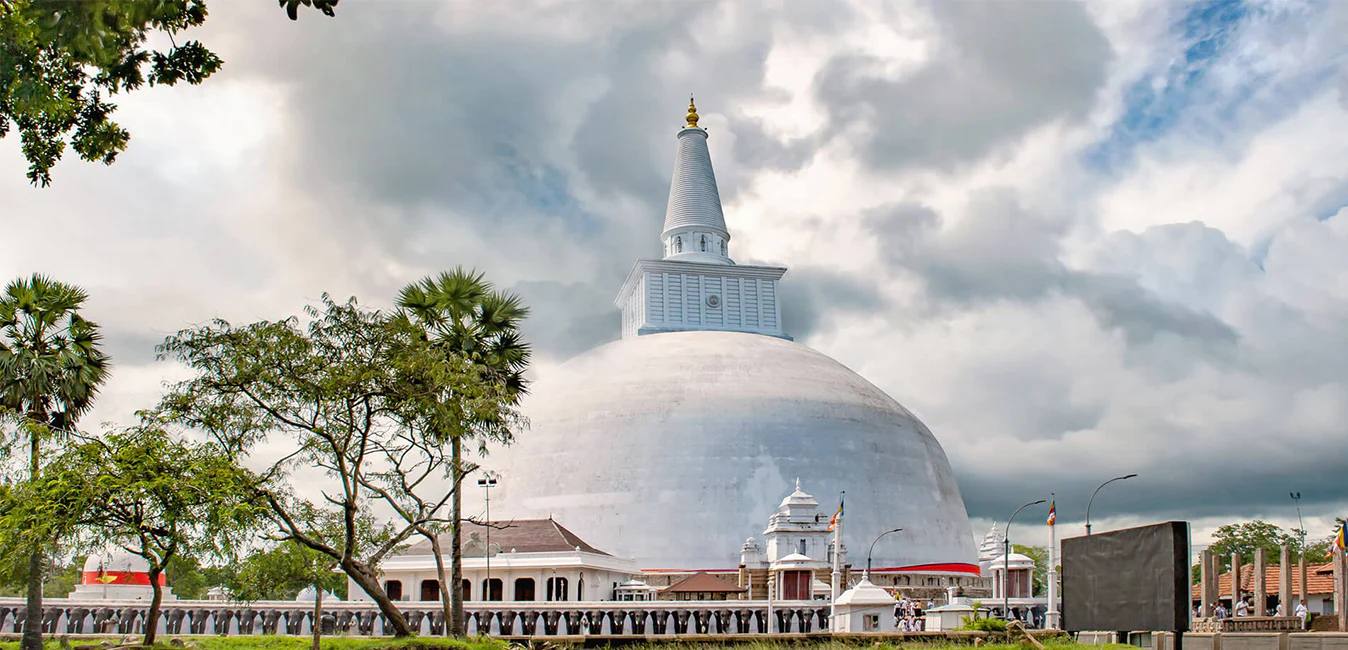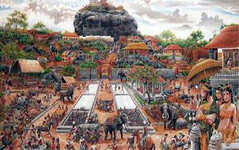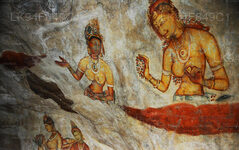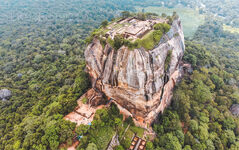
Anuradhapura City
Anuradhapura is belongs to the North Central Province in to Sri Lanka. Anuradhapura is one of the ancient capitals of Sri Lanka, famous for its well-preserved ruins of ancient Lankan civilization. The city, now a UNESCO World Heritage Site, lies 205 km north of the current capital Colombo in Sri Lanka.
King Kashyapa I of Anuradhapura
The citadel of Sigiriya is, possibly, the most famous historical icon of Sri Lanka. Created on an almost sheer rock rising from the plains of Anuradhapura; the citadel is a marvel of ancient architecture. But the most important and mysterious aspect of Sigiriya are its unfading rock frescoes. These beautiful paintings have not lost their color in over a thousand years and have been the marvel of archaeologists and researchers from around the world. Despite this, the story of the king who created and ruled this citadel is not very well known.
The beginnings of King Kashyapa
Kashyapa I, or Kassapa I as he is also known, was born as the eldest son of King Dhatusena in the middle of the 5th century AD. He was talented in politics, war strategies and the arts as a prince ought to be; but luck was not on his side. Despite being born the eldest he was the son from one of the king’s concubines; and his younger stepbrother who was the son of the royal consort was declared the rightful heir. Kashyapa felt that the crown prince Mogallana was a coward and not fit for the throne. He resented the fact that he had been ignored.
A plan is hatched
Meanwhile, Kashyapa’s father – king Dhatusena had an army commander, whose name was Migara. This commander had a disagreement with the king and sought to have vengeance for it. Migara was cunning, and knew Prince Kashyapa’s feelings on not being nominated the heir. He incited the prince to rebel against his father.
Assisted and encouraged by Migara, Kashyapa staged a palace coup. He overthrew King Dhatusena and usurped the throne 473 AD. The former king was imprisoned, while Kashyapa I became the second king of the Mouriyan Dynasty of Sri Lanka. The crown prince Mogallana appeared to prove Kashyapa’s judgement of being a coward true, as he fled to India to save his own life. Kashyapa’s rule may have proved comparatively normal; if not for the deceitful Migara. The commander was not satisfied with the king being simply overthrown; he wanted him dead.
A loss of temper and the results of bad decisions
Migara made Kashyapa to believe that the former king Dhatusena had hid an enormous amount of wealth and the misled prince demanded that the imprisoned king reveal all his treasures. The king looked at him sadly and then led him to Kalawewa, an irrigation tank that he had constructed. ‘This is the only treasure I have’ he said to his captors. Kashyapa, blinded by his greed and pride, became incensed by this response and ordered him entombed alive within the wall of the irrigation tank – or so the story goes. Another version of the tale states that Kashyapa had Dhatusena killed and walled up the body within a random wall.
This cruel decision of his earned him the enmity of public and the priests. They called him Pithru Gathaka Kashyapa (Patricidal Kashyapa) and spewed vitriol at him. Fearing rebel action from either the people or his step-brother Mogallana; King Kashyapa sought a more secure location for his citadel.
Sigiriya is born
Kashyapa discovered a large, roughly lion-shaped rock that rose almost vertically out of the plains of Anuradhapura. He had a large citadel and an elaborate city built on the sides of the rock. His palace was constructed on the top of the rock. He had the lion-like protruberances carved more elaborately; and named the rock ‘Sigiriya’ or ‘Lion Hill’.
Sigiriya depicted the king’s taste for an artistic and luxurious lifestyle. There were large beautiful gardens with a number of pools, fountains and other structures; a complex underground irrigation system that supplied water to the pools and fountains; the famous Mirror Wall which was shiny enough to see one’s face in its heyday; and wonderful frescoes of heavenly maidens carrying flowers.
Despite its comforts, Sigiriya had enhanced defense allowing unhindered views of the nearby plains. There were large rampart and moats built around the city protecting it. Sigiriya lived up to its name as the new capital with its strategic advantage for the defenders during an attack.
The Fall of Kashyapa
Though King Kashyapa did his best to protect his kingdom; his efforts proved in vain. In 495 AD, over twenty years after the beginning of his reign, Kashyapa’s stepbrother Mogallana invaded with an army from South India in order to claim his throne. A fierce battle ensued on the plains of Anuradhapura; and Kashyapa, with his lack of support amongst his own people, was overwhelmed by the foreign forces and lost. He did not lose his pride though, and not wishing to be captured and tortured; King Kashyapa I fell on his own sword and killed himself. Kashyapa’s stepbrother Mogallana was enthroned after him and became King Mogallana I.
About Anuradhapura District
Anuradhapura is belongs to the North Central Province in to Sri Lanka. Anuradhapura is one of the ancient capitals of Sri Lanka, famous for its well-preserved ruins of ancient Lankan civilization. The city, now a UNESCO World Heritage Site, lies 205 km north of the current capital Colombo in Sri Lanka.
In the sacred city of Anuradhapura and in the vicinity are a large number of ruins. The ruins consist of three classes of buildings, dagobas, monastic buildings, and pokuna (ponds). The city had some of the most complex irrigation systems of the ancient world, situated in the dry zone of the country the administration built many tanks to irrigate the land. Most of the civilians are Sinhala, while Tamils and Sri Lankan Moors live in the district.
About North Central Province
North Central Province which is the largest province in the country covered 16% of total country's land area. North Central Province consist two districts called Polonnaruwa and Anuradhapure. Anuradhapura is the largest district in Sri Lanka. Its area is 7,128 km².
North Central Province has numerous potentials for Investors to start their Businesses, especially Agriculture, agro based industries and Livestock sectors. More than 65% of North Central Province's people depend on basic Agriculture and agro base industries. NCP also called "Wew Bendi Rajje" because there are more than 3,000 medium and large scale tanks situated in the province. Sri maha bodiya, Ruwanweli seya, Thuparama dageba, Abayagiri Monastry, Polonnaruwa Rankot wehera, Lankathilake are scared














